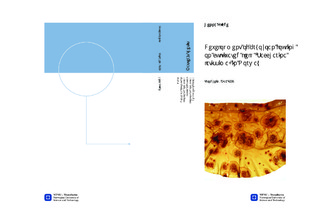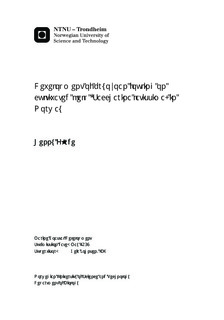| dc.description.abstract | Biofouling of cultivated kelp is a major challenge for the seaweed industry, and hard to avoid during the cultivation process. Several species are involved in the fouling in temperate waters, and among them are the encrusting bryozoans Membranipora membranacea and Electra pilosa. The bryozoans planktotrophic larvae settles on kelp and give rise to widespread colonies that covers the surface of the kelp thalli. The colonies make the flexible kelp thalli brittle and susceptible to breakage, and thus loss of valuable biomass for the producers. The encrusting fouling also reduces the value of the product my making it indelicate and unsuitable for human food consumption. The development of the bryozoan fouling on cultivated Saccharina latissima in temperate waters was documented during the cultivation period in the sea from April to September to establish the time of settling and development in area coverage of colonies of M. membranacea and E. pilosa. This was performed at two locations in Norway, one for frequent time registrations at a seaweed farm, and one for registrations of the development of bryozoan fouling in an integrated multi-trophic aquaculture (IMTA) system. The registrations were performed at three different cultivation depths at each location. Zooplankton samples were also taken regularly for registration of bryozoan larvae abundance. The results showed that the bryozoan colonies settled on the cultivated kelp in mid June at both locations, followed by a rapid colony growth during late June and July. In August and September the kelp was highly degraded by the bryozoan coverage, and very subjective to breakage of the lamina. M. membranacea was the most prevailing of the two species, having the highest proportion of coverage during the whole sampling period, even though both species was present in the zooplankton samples in almost similar abundance. Although abundant at all cultivation depths, the statistical analysis of the data showed a decrease in bryozoan coverage with increasing depth. Cultivating kelp at lower depths may however reduce the production of kelp biomass, and may not be feasible for the industry. The zooplankton analysis showed presence of bryozoan larvae during the whole sampling season and a peak in abundance in late June, which coincided with the rapid increase in bryozoan coverage on the kelp. This study shows that, from a commercial point of view, harvest of cultivated S. latissima in temperate waters should occur in June to avoid the negative impact from bryozoan fouling. | nb_NO |

